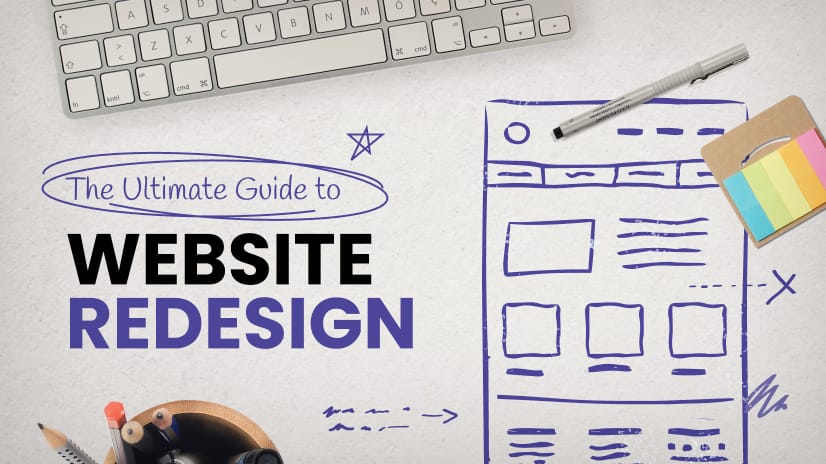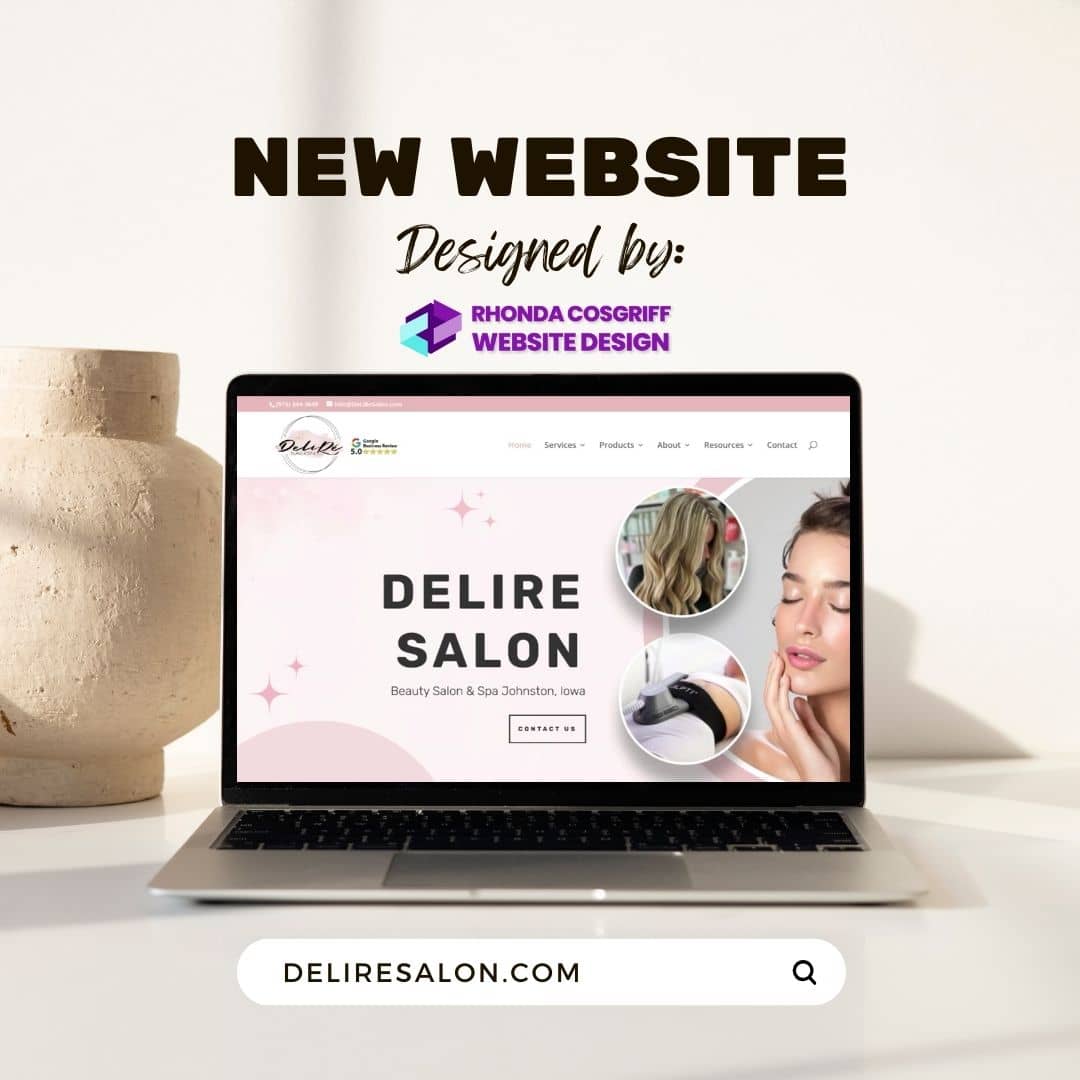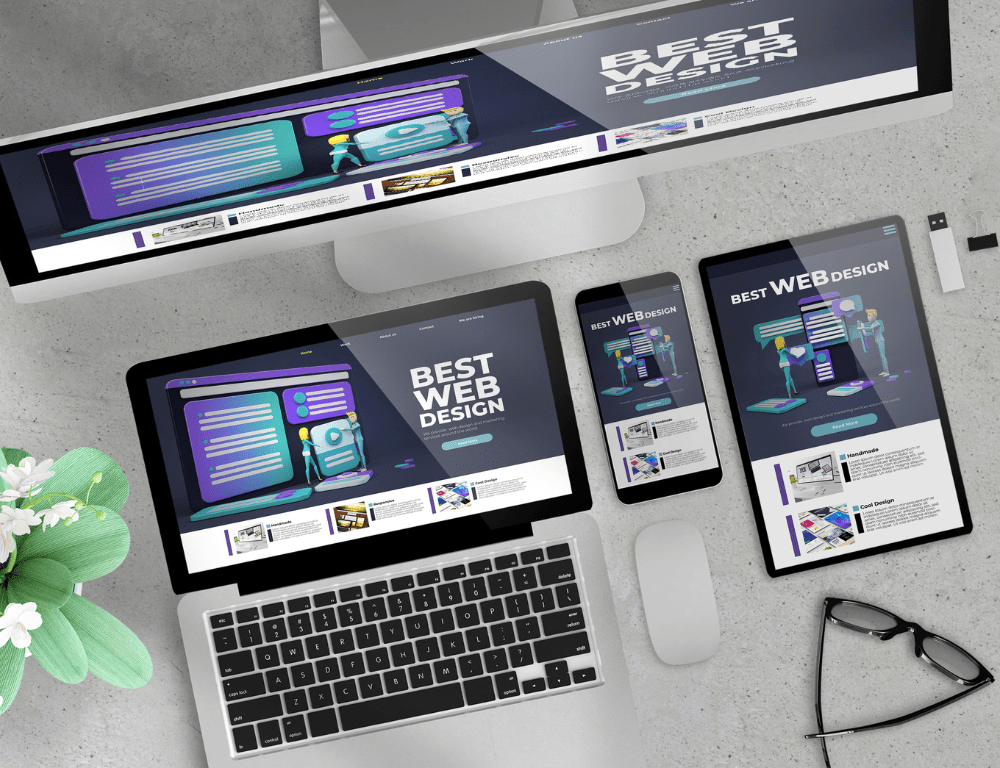Dynamic Web Design: Unlocking the Power of Responsive User Experiences
SEO Meta-Description: In this comprehensive article on Dynamic Web Design, discover the key principles, benefits, and best practices for creating interactive and user-friendly websites. Learn how Dynamic Web Design can enhance your online presence and deliver exceptional user experiences.
Introduction: Embracing the Dynamic Web Design Revolution
The digital landscape is constantly evolving, and businesses worldwide are vying for attention in the online realm. In this fast-paced era, having a static website is no longer enough to meet the needs and expectations of modern users. Enter Dynamic Web Design, a revolutionary approach that promises to elevate user experiences to new heights. In this article, we will explore the ins and outs of Dynamic Web Design, understand its significance, and learn how it can drive engagement, conversion, and success for businesses and individuals alike.
What is Dynamic Web Design?
Dynamic Web Design is an innovative web development technique that enables websites to adapt and respond to user interactions in real-time. Unlike traditional static websites, which offer a fixed layout and content, dynamic websites provide personalized and interactive experiences tailored to each user’s preferences. By leveraging cutting-edge technologies such as HTML5, CSS3, and JavaScript, Dynamic Web Design empowers businesses to create engaging, fluid, and visually captivating websites that capture and retain user attention effectively.
The Advantages of Dynamic Web Design
Incorporating Dynamic Web Design into your online strategy offers a plethora of benefits. Let’s delve into the advantages of this approach:
1. Enhanced User Experience (UX)
Dynamic Web Design places the user at the center of the website experience. By adapting content, layout, and functionality based on user interactions and preferences, websites can deliver a seamless and enjoyable journey to their visitors. This increased focus on UX leads to higher customer satisfaction and prolonged user engagement.
2. Improved Mobile Responsiveness
In today’s mobile-driven world, having a website that caters to mobile users is paramount. Dynamic Web Design ensures that websites automatically adjust their display based on the user’s device, screen size, and orientation. This responsiveness enhances the mobile user experience, leading to reduced bounce rates and improved search engine rankings.
3. Better SEO Performance
Search engines favor websites that provide valuable and relevant content to users. Dynamic Web Design enables websites to offer fresh, dynamic content, which search engines appreciate. As a result, dynamic websites often rank higher in search engine results, driving organic traffic and improving online visibility.
4. Increased Conversion Rates
When users have a positive experience on a website, they are more likely to convert into customers or take desired actions, such as signing up for a newsletter or making a purchase. The personalized and interactive nature of Dynamic Web Design can significantly boost conversion rates, ultimately leading to business growth.
5. Seamless Content Management
Dynamic Web Design often incorporates Content Management Systems (CMS) that make it easy for website owners to update and manage content efficiently. This feature empowers businesses to keep their websites current and relevant, without the need for extensive technical knowledge.
6. Competitive Edge
In a crowded online marketplace, setting yourself apart from the competition is crucial. A visually appealing, user-friendly, and dynamic website can give businesses a competitive edge and foster a positive brand perception.
LSI Keywords and their Significance in Dynamic Web Design
LSI (Latent Semantic Indexing) Keywords play a pivotal role in Dynamic Web Design. These are words and phrases related to the primary keyword that search engines use to understand the context and relevance of a webpage. By strategically incorporating LSI Keywords into your website content, you can enhance its semantic value and improve search engine visibility. Here are some essential LSI Keywords relevant to Dynamic Web Design:
- Responsive Web Design
- User Interaction Design
- Personalized User Experience
- Real-Time Content Updates
- Cross-Platform Compatibility
- Mobile-Friendly Layout
- Interactive Web Elements
- Adaptive Website Design
- Dynamic CSS Animations
- Fluid Page Transitions
How to Implement Dynamic Web Design: Best Practices
To harness the full potential of Dynamic Web Design, it is essential to follow best practices that ensure optimal results. Here are some key steps to implement Dynamic Web Design successfully:
1. Define Clear Objectives
Before embarking on any website development project, outline clear objectives and goals. Understand the target audience, their preferences, and the actions you want them to take on your website.
2. Conduct Thorough User Research
To create personalized experiences, gather insights into your users’ behavior and preferences. Conduct surveys, analyze user data, and use the information to inform your design decisions.
3. Focus on Speed and Performance
A dynamic website should load quickly and perform seamlessly. Optimize images, minimize HTTP requests, and leverage caching techniques to enhance website speed.
4. Prioritize Mobile Optimization
With a significant portion of internet users accessing websites through mobile devices, prioritize mobile optimization. Test your website on different devices and screen sizes to ensure a consistent experience.
5. Implement Intuitive Navigation
Create an intuitive and user-friendly navigation system that helps visitors find what they need quickly. Incorporate search functionality, breadcrumbs, and clear calls-to-action.
6. Utilize Dynamic Content Modules
Design your website using dynamic content modules that can be easily updated and rearranged. This flexibility allows for quick content changes and keeps your website relevant.
7. A/B Test for Continuous Improvement
Continuously monitor and analyze user interactions with your dynamic website. Perform A/B tests to identify which design elements and content perform best.
Frequently Asked Questions (FAQs):
Q: What is the role of JavaScript in Dynamic Web Design?
JavaScript plays a critical role in Dynamic Web Design by enabling real-time interactivity and dynamic content updates. It allows developers to create interactive elements, animations, and user interfaces that enhance the overall user experience.
Q: Are there any downsides to Dynamic Web Design?
While Dynamic Web Design offers numerous benefits, it may require more significant initial development effort and ongoing maintenance. Additionally, complex dynamic elements may impact website load times if not optimized properly.
Q: Is Dynamic Web Design suitable for all types of websites?
Dynamic Web Design is suitable for most websites, especially those that aim to provide personalized experiences and engage users through interactivity. However, for simple static websites with minimal content, a dynamic approach may not be necessary.
Q: How does Dynamic Web Design impact SEO?
Dynamic Web Design positively impacts SEO by providing fresh and relevant content to search engines. Search engines favor websites that update their content regularly, leading to higher rankings and increased organic traffic.
Q: Can I implement Dynamic Web Design on my existing website?
Yes, it is possible to transition from a static website to a dynamic one. However, the process may involve significant changes to the underlying code and design. It’s essential to work with experienced developers for a smooth migration.
Q: What are the top tools for Dynamic Web Design?
Some popular tools for Dynamic Web Design include React, Angular, Vue.js, and jQuery. These frameworks and libraries offer a range of features and functionalities to create interactive websites.
Q: What is Dynamic Web Design? Dynamic Web Design is an innovative approach to web development that allows websites to adapt and respond to user interactions in real-time. Unlike traditional static websites, dynamic websites offer personalized and interactive experiences tailored to each user’s preferences. This cutting-edge technique leverages technologies like HTML5, CSS3, and JavaScript to create engaging, fluid, and visually captivating websites.
Q: How does Dynamic Web Design differ from Static Web Design? Static Web Design offers fixed content and layout, which remains unchanged regardless of user interactions. On the other hand, Dynamic Web Design provides personalized content, responsive layouts, and interactive elements that adapt to users’ actions and preferences. This adaptability and interactivity set dynamic websites apart from their static counterparts.
Q: What are the benefits of Dynamic Web Design? Dynamic Web Design offers numerous advantages, including enhanced user experiences, improved mobile responsiveness, better SEO performance, increased conversion rates, seamless content management, and a competitive edge in the online marketplace. By focusing on user-centric design, dynamic websites deliver exceptional results for businesses and individuals.
Q: How does Dynamic Web Design enhance User Experience (UX)? Dynamic Web Design places users at the center of the website experience by tailoring content and functionality to their specific needs. The personalized approach ensures that users have a seamless and enjoyable journey on the website, leading to higher satisfaction and prolonged engagement.
Q: Is Dynamic Web Design suitable for all types of websites? Dynamic Web Design is suitable for most websites, particularly those that aim to provide personalized experiences and engage users through interactivity. However, for simple static websites with minimal content and functionality, a dynamic approach may not be necessary.
Q: How does Dynamic Web Design impact Search Engine Optimization (SEO)? Dynamic Web Design positively impacts SEO by providing fresh and relevant content to search engines. Search engines favor websites that update their content regularly, leading to higher rankings and increased organic traffic. A dynamic approach can boost a website’s visibility and online presence.
Q: Can I implement Dynamic Web Design on my existing website? Yes, it is possible to transition from a static website to a dynamic one. However, the process may involve significant changes to the underlying code and design. It’s essential to work with experienced developers to ensure a smooth and successful migration.
Q: What are the top tools for Dynamic Web Design? Several popular tools and frameworks can facilitate Dynamic Web Design, such as React, Angular, Vue.js, and jQuery. These libraries offer a wide range of features and functionalities to create interactive and dynamic websites.
Q: Are there any downsides to Dynamic Web Design? While Dynamic Web Design offers numerous benefits, it may require more significant initial development effort and ongoing maintenance. Additionally, complex dynamic elements may impact website load times if not optimized properly. Therefore, careful planning and optimization are essential to avoid potential downsides.
Q: How can Dynamic Web Design improve Mobile Responsiveness? Dynamic Web Design ensures that websites automatically adjust their display based on the user’s device, screen size, and orientation. This responsive design enhances the mobile user experience, leading to reduced bounce rates and improved search engine rankings for mobile searches.
Q: Does Dynamic Web Design require a Content Management System (CMS)? While Dynamic Web Design does not strictly require a CMS, many dynamic websites incorporate CMS platforms. Content Management Systems make it easy for website owners to update and manage content efficiently, ensuring that the website stays current and relevant.
Q: What role does JavaScript play in Dynamic Web Design? JavaScript plays a critical role in Dynamic Web Design by enabling real-time interactivity and dynamic content updates. It allows developers to create interactive elements, animations, and user interfaces that enhance the overall user experience.
Q: How can businesses leverage Dynamic Web Design to gain a competitive edge? In a crowded online marketplace, a visually appealing, user-friendly, and dynamic website can set businesses apart from the competition. A dynamic website fosters a positive brand perception and encourages users to engage with the brand, leading to increased conversions and brand loyalty.
Q: Can Dynamic Web Design be combined with other web development techniques? Yes, Dynamic Web Design can be combined with other web development techniques, such as responsive design, mobile optimization, and progressive web apps. These combinations can further enhance the user experience and overall performance of the website.
Q: Is Dynamic Web Design cost-effective in the long run? While the initial development of a dynamic website may involve higher costs compared to a static website, the long-term benefits, such as improved user engagement, increased conversions, and better SEO performance, often outweigh the initial investment.
Q: How can I measure the success of my Dynamic Web Design implementation? To measure the success of Dynamic Web Design, monitor key performance indicators (KPIs) such as user engagement, bounce rates, conversion rates, and organic search traffic. Analyzing these metrics will provide insights into the effectiveness of the dynamic elements on your website.
Q: Can Dynamic Web Design enhance e-commerce websites? Absolutely! Dynamic Web Design is particularly well-suited for e-commerce websites. By creating personalized shopping experiences, showcasing real-time product availability, and implementing interactive product previews, dynamic websites can significantly enhance the online shopping journey for customers.
Q: How can Dynamic Web Design benefit content-heavy websites? For content-heavy websites, dynamic elements can facilitate better organization and navigation of the content. Dynamic menus, interactive search filters, and personalized content recommendations can help users find relevant information quickly, leading to a more satisfying user experience.
Q: Are there any security concerns associated with Dynamic Web Design? As with any web development approach, security considerations are essential. Dynamic Web Design does not inherently introduce security risks, but developers must follow best practices to safeguard against potential vulnerabilities and ensure data protection.
Q: Can I update the content on my dynamic website without developer assistance? Yes, one of the advantages of Dynamic Web Design is its content management capabilities. Many dynamic websites incorporate user-friendly CMS platforms that allow website owners to update content, images, and other elements without relying on developer assistance.
Q: How often should I update the content on my dynamic website? Regularly updating your dynamic website’s content is essential to keep it fresh and relevant. The frequency of updates may vary depending on your industry, target audience, and content strategy. Aim to provide valuable and timely information to your users.
Q: What are the trends in Dynamic Web Design for the future? The field of Dynamic Web Design is continually evolving, with new technologies and trends emerging. Some future trends may include more sophisticated AI-driven personalization, enhanced virtual reality (VR) and augmented reality (AR) integrations, and further advancements in mobile optimization.
Q: How can I find the right web development team for implementing Dynamic Web Design? When selecting a web development team, look for experience and expertise in creating dynamic websites. Review their portfolio, check client testimonials, and ensure they have a good understanding of your business goals and objectives.
Q: Can Dynamic Web Design help with accessibility and inclusivity? Absolutely! Dynamic Web Design allows for the implementation of accessibility features, such as screen reader compatibility, keyboard navigation, and contrast adjustments. By making your website more inclusive, you can reach a broader audience and ensure that everyone can access your content.
Conclusion: Embrace the Power of Dynamic Web Design
In today’s digital era, staying ahead of the competition requires innovative solutions that prioritize user experiences. Dynamic Web Design offers the perfect blend of interactivity, responsiveness, and personalization to captivate and retain visitors. By implementing best practices and leveraging the latest technologies, businesses can create dynamic websites that leave a lasting impression on their audience. Embrace the power of Dynamic Web Design and unlock the potential for growth, success, and user satisfaction.










